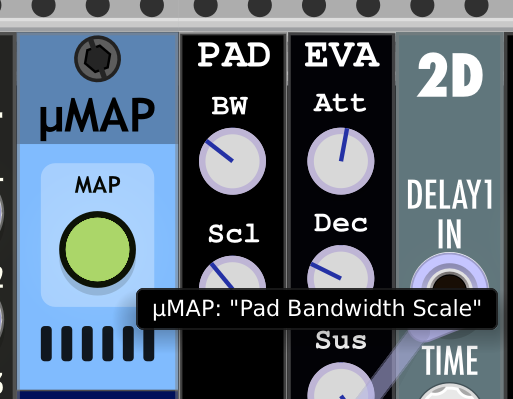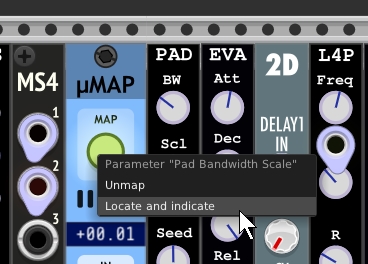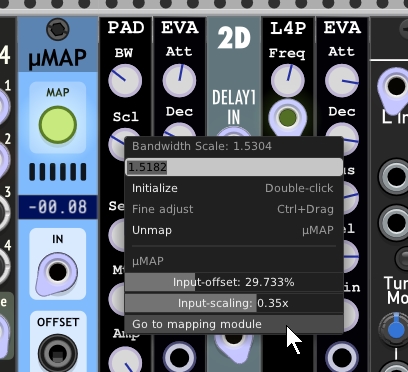Tutorial: Transpose a Harmony (Squinktronix) chord progression
Demo patch to explain how a Harmony or Harmony II (Squinktronix) chord progression can be transposed to achieve sequence variation while maintaining key and scale.
The upper half of the patch uses the Harmony module. In oppose to Harmony II, it implements chord inversions. The lower half is very similar, but uses Harmony II. The X-pose parameters of both modules slightly differ, therefore requiring different setups.
Crossfade between the two modules using the Mix knob of Blender (Sickozell).
First, a chord progression (Cmaj, Gmaj, Emin, Fmaj), is created by feeding single notes (C, G, E, F) from NoteSeq16 (JW-Modules) into Harmony.
Harmony’s ‘X-pose’ is used to offset the progression by scale steps rather than semitones. As the scale steps parameter does not follow the V/Oct standard, OFS (docB) is used as an adapter for conversion. Amount of transposition is controlled by ADDR-SEQ (Bogaudio), in which for each scale step up or down, 0.1V is added or subtracted.
Example: Addition of 0.3V (+0.3V) transposes a note up by 3 scale steps, e.g. from C to F. Similarly, a subtraction of 0.2V (-0.2V) transposes a note down by 2 scale steps, e.g. from G to E. This way, a chord progression can be transposed in the range of -/+ 1 octave (-/+ 7 scale steps) by adjusting steps in ADDR-SEQ by up to -/+ 0.7V.
As an additional voice (muted by default), the chord progression is arpeggiated using Arp (Hampton Harmonics), which can be activated by unmuting it in the Venom Mute module.
In Harmony II, X-pose has its own port (XP) for CV control. In contrast, the port is missing in Harmony, so uMap (stoermelder) is employed for parameter control.





